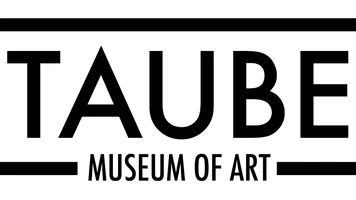The burden of media, journalists, and reporters is high. They have to summarize complex topics, give equal weight to two sides of an issue, and do all of it within the constraints of a shrinking attention span. And when they fail, the consequences are significant.
The information we consume on a daily basis sets the course for the decisions we make and the opinions we form. When we consume bad information, we’re more likely to make bad decisions; we’re more likely to form unfortunate opinions. And when we get good information, we’re more likely to make good decisions; we’re more likely to form fair opinions.
What follows below is the dissection of a recent news story on KX News that didn’t clear the high standard of being both editorially and factually accurate. The story is on Monday’s City Council meeting and the discussion over City Council reform; it’s a story in which I’m a direct participant and passionate supporter.
But I’m not doing this to throw KX News or reporter Tim Olson under the bus. KX has a long history of delivering quality news, and Tim was recently thrown into the middle of a story that’s been unfolding for many months. It’s a complex issue, and it has been developing quickly over the past month. And in some ways, I share some responsibility. I’ve been responsible for much of #MakeMinot’s written communication. The news releases Mr. Olson used to frame up his story — I wrote them.
So why am I doing this? First, it allows me to correct some misinformation on behalf of #MakeMinot. Second, it allows all of you to get a first-hand look at how hard the job of a reporter is — a single incorrect word or subtle turn of phrase can paint a story in a dramatically different light.
So here’s my critique KX’s coverage of Monday night’s City Council meeting. If you want the original version, here’s your link.
At Monday’s City Council meeting, over an hour of discussion was devoted to #MakeMinot — and specifically, a new resolution put forth by the reform group.
Tim Olson reports on what that resolution would mean for the city going forward.
On Monday, #MakeMinot asked the Minot City Council to pass a resolution of support and public vote of a “modern” council structure: seven-members elected at-large, including a voting mayor.
The ‘support’ language is not accurate. What #MakeMinot asked of Council was a resolution of ‘intent’ — intent to honor the petition process by advancing to the voters a plan that matches the spirit of the #MakeMinot petition. The resolution did not ask Council to support a 5-member plan, a 7-member plan, a 14-member plan, or an at-large or ward system.
However, the resolution was found by the City Attorney’s office to contain language — specifically, the word “shall” — too strong for the City to agree to without changes to the home rule charter.
A decision was tabled until the February meeting of the Council, allowing time for the legalese of the resolution to be modified.
This is accurate. There was some language in the #MakeMinot resolution that was legally binding. The City Attorney was not comfortable with council binding themselves to an action it does not presently have the authority to do. The Home Rule Charter Election is first required.
But what would the implications of that resolution be, should it be passed next month?
Perhaps most significantly, it would put a seven-member at-large council to an up-or-down vote of the people in June of 2016.
This is accurate, but a clarification would help. #MakeMinot has asked council to advance a plan that includes 6-member Council and a voting Mayor. Add them together and we get a 7-member governing body.
It means that a proposal put forth by former Mayor Orlin Backes — a seven-member council that retains the current system of ward representation — would not appear on the June ballot.
It is not the #MakeMinot resolution that means an alternate proposal can’t be on the ballot. It’s the Attorney General’s opinion, the City of Minot’s opinion, and North Dakota Century Code that set the policy that states only one issue — the petitioned issue — should be on the ballot. The #MakeMinot resolution asks Council to show that their intent is to honor those positions. And the plan advocated by former Mayor Backes was for an 8-member council plus a Mayor.
But it also means that the #MakeMinot petition for a five-member at-large council — which recently received just under 3,000 signatures — would be thrown out.
The ‘thrown out’ language in this sentence paints the situation and the City in an unfortunate light. #MakeMinot has volunteered to recall the petition if a council-initiated measure is advanced that matches the spirit of the certified petition. The spirit of compromise, which is what’s unfolding, is lost with the ‘thrown out’ language.
That petition was submitted in October, and by law, is required to be considered by voters within 120 days of submission. However, that time frame can’t be met without changes being made to the home rule charter (a vote on that matter will be held in March).
This is not accurate. The petition was submitted in October, but it wasn’t certified until December 2nd. The 120-day period starts after certification. And it is not the 120-day window that can’t be met. It’s the City’s preferred timeline to see the issue considered in June that creates a legal hurdle; June is outside the 120-day period. And all of this is pending a successful Home Rule Charter election on March 1st.
The #MakeMinot group says it’s willing to pursue legal action against the City of Minot for failing to put the petition to a vote within that 120-day window. But if the resolution of support is passed at the February meeting, the petition will be withdrawn entirely.
Again, #MakeMinot is not asking for a ‘resolution of support’; they are asking for a ‘resolution of intent’. And the petition will not be withdrawn unless Council follows through and acts to honor the resolution of intent. But yes, #MakeMinot has stated publicly that if they lose confidence in the unfolding process, they are prepared to ask the courts to enforce laws that outline the petition process.
#MakeMinot spokesman Scott Louser says that although the seven-member council being proposed in the new resolution differs from the five-member council that 2,800 petitioners signed for, the new plan still eliminates the ward system and creates a smaller system of government.
As a summary, this paragraph is accurate. And I think Mr. Louser did say something at Monday’s meeting that matches the sentiment, but an actual quote would be more appropriate.
Tim Olson, KX News.
In a press release today, #MakeMinot spokesman Shaun Sipma said the group is “appreciative” of the Council’s effort in trying to get the resolution passed.
The sentiment is accurate. But it misses the essential message of #MakeMinot’s statement that the group is going to continue working with the City to help find a legal path that includes assurances that spirit of the citizen-initiated petition will be considered by voters.
The next meeting of the City Council will be held on February 1st.
It would be a great time to attend a City Council meeting!



